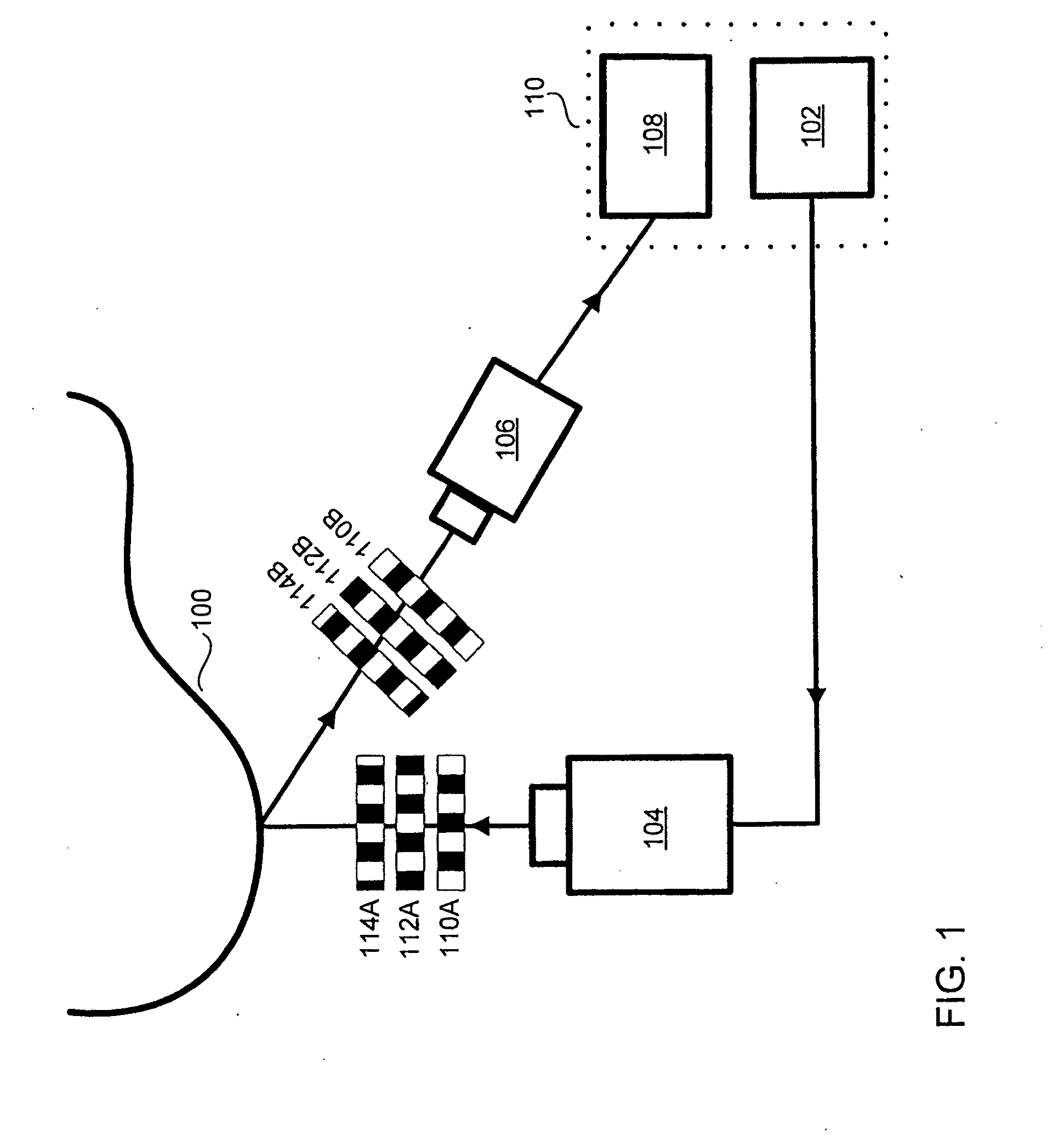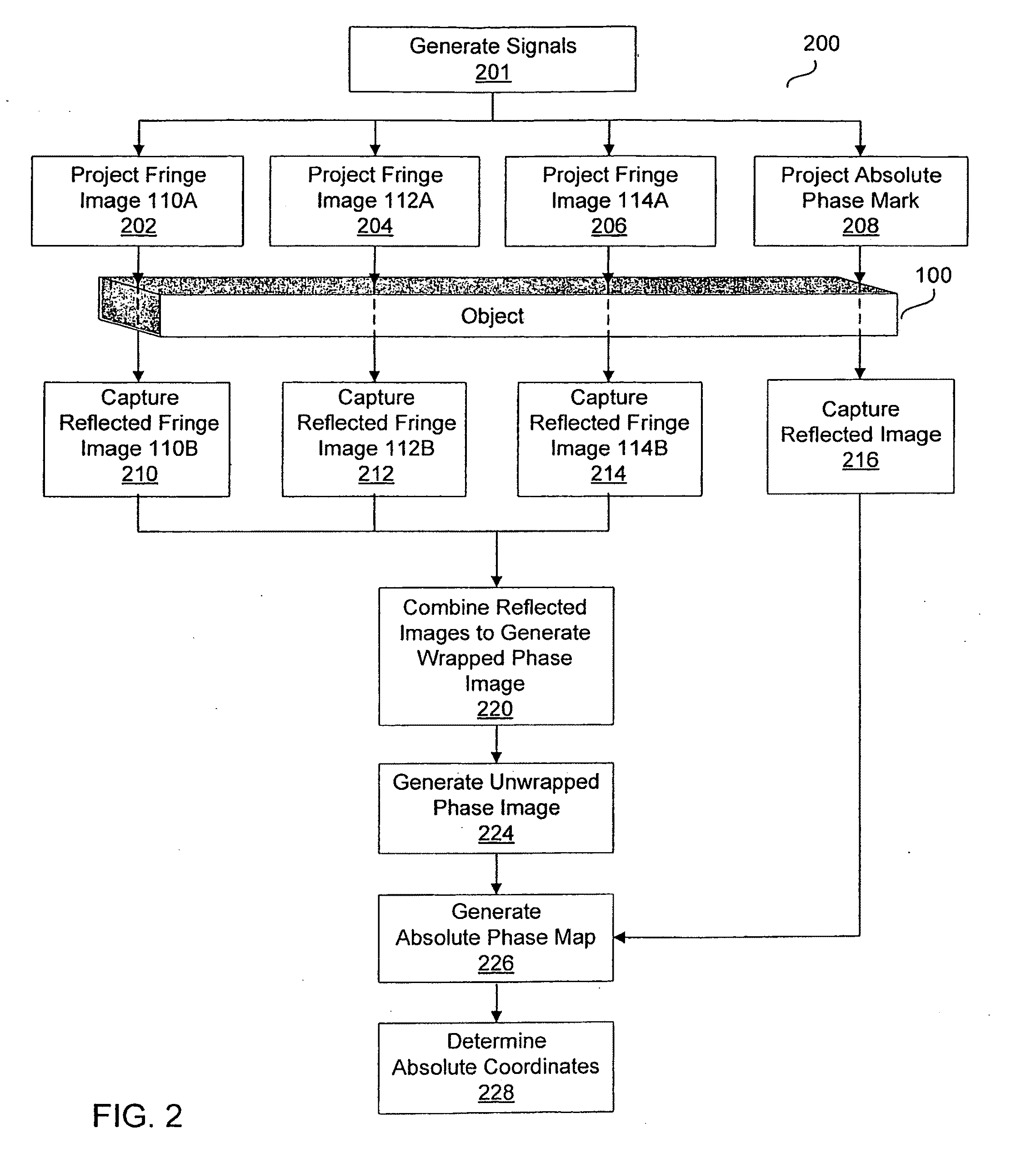Method and Apparatus for Absolute-Coordinate Three-Dimensional Surface Imaging
a three-dimensional surface and absolute-coordinate technology, applied in image analysis, instruments, computing, etc., can solve the problems of affecting the speed of further processing, affecting the accuracy of the image, and providing a relatively small measurement error, so as to achieve the effect of convenient display and manipulation
- Summary
- Abstract
- Description
- Claims
- Application Information
AI Technical Summary
Benefits of technology
Problems solved by technology
Method used
Image
Examples
Embodiment Construction
[0067]The invention and its advantages will be readily apparent to those skilled in the art from the following description of some prior art and embodiments of practicing the invention, which are given by way of example only, with reference to the accompanying drawings.
Prior Art Method and Apparatus for 3D Surface Contouring
[0068]Referring to FIG. 1, a setup for a prior art system for 3D surface measurement is shown schematically. A signal generator 102 drives a projector 104 to illuminate a surface of an object 100. A camera 106 receives the corresponding reflected images and delivers them to an image processor 108. The image processor 108 derives the objects' surface contour from the reflected images.
[0069]As shown in FIG. 1, signal generator 102 and image processor 108 can be (and usually are) located within the same device 110, such as a personal computer, workstation, processor, or other device. For example, the signal generator and image processor may comprise separate softwar...
PUM
 Login to View More
Login to View More Abstract
Description
Claims
Application Information
 Login to View More
Login to View More - R&D
- Intellectual Property
- Life Sciences
- Materials
- Tech Scout
- Unparalleled Data Quality
- Higher Quality Content
- 60% Fewer Hallucinations
Browse by: Latest US Patents, China's latest patents, Technical Efficacy Thesaurus, Application Domain, Technology Topic, Popular Technical Reports.
© 2025 PatSnap. All rights reserved.Legal|Privacy policy|Modern Slavery Act Transparency Statement|Sitemap|About US| Contact US: help@patsnap.com



